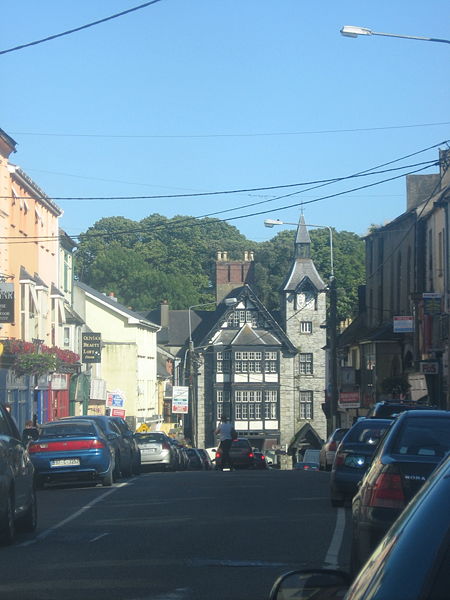- About MAA
- Membership
- MAA Publications
- Periodicals
- Blogs
- MAA Book Series
- MAA Press (an imprint of the AMS)
- MAA Notes
- MAA Reviews
- Mathematical Communication
- Information for Libraries
- Author Resources
- Advertise with MAA
- Meetings
- Competitions
- Programs
- Communities
- MAA Sections
- SIGMAA
- MAA Connect
- Students
- MAA Awards
- Awards Booklets
- Writing Awards
- Teaching Awards
- Service Awards
- Research Awards
- Lecture Awards
- Putnam Competition Individual and Team Winners
- D. E. Shaw Group AMC 8 Awards & Certificates
- Maryam Mirzakhani AMC 10 A Awards & Certificates
- Two Sigma AMC 10 B Awards & Certificates
- Jane Street AMC 12 A Awards & Certificates
- Akamai AMC 12 B Awards & Certificates
- High School Teachers
- News
You are here
Robert Murphy: Mathematician and Physicist - The Early Years
The Early Years
We are fortunate to have an entry on Robert Murphy in the Dictionary of National Biography. This entry, by Thompson Cooper [1894], led the authors to original sources on Murphy, such as a letter written by Augustus De Morgan (1806-1871) and an obituary. Unless otherwise noted, the information in this section (The Early Years) and the following section (Careers in Academia) is from Cooper [1894].

Figure 1. Main street of Mallow, County Cork, Ireland, in 2007 (Source: Photograph by Alison, 2007. Licensed under Creative Commons Attribution-Share Alike 3.0 Unported license.)
Life Experiences
Robert Murphy was born in 1806 in Mallow, Cork County, Ireland. We do not know Murphy’s exact birth date, but he was baptized in the Church of Ireland on March 8, 1807 [Barry 1999]. He was the third son (of seven children) of John Murphy, a shoemaker, and Margaret Murphy. (Creedon [2001] claimed that Murphy was the sixth of nine children, but no other references support this claim.) When he was eleven, Murphy was run over by a cart in an accident that resulted in a fractured thighbone. This incident left him bedridden for one year. During this time, Murphy read the works of Euclid (ca. 300 BCE) and studied algebra.
Murphy demonstrated his mathematical ability at a young age when he anonymously responded with ingenious solutions to mathematical problems posed in a local newspaper by a teacher in Cork named Mulcahy. Murphy would end his responses by signing “Mallow” [Barry 1999]. Mulcahy was shocked when he learned that it was a thirteen-year-old boy who was submitting solutions to his problems [Creedon 2001]. Mr. Croker, one of Murphy’s neighbors, provided an account in which Mulcahy said in amazement, “Mr. Croker, you have a second Sir Isaac Newton in Mallow: pray look after him” [Long 1846, pp. 337-338]. Mulcahy then convinced Mr. Hopley, principal of a local school, to pay for the fees and books required for Murphy to attend. After completing his studies at the school, Mulcahy and Hopley sponsored Murphy’s application to Trinity College, Dublin, in 1823. Murphy was not admitted, most likely because of his lack of formal education [Creedon 2001]. Although Murphy’s first attempt to gain entrance into college was unsuccessful, he gained recognition less than a year later by writing a paper that dealt with the three classical Greek problems.
Murphy’s Refutation
When he was eighteen, Murphy was recognized for his aforementioned publication,
Refutation of a Pamphlet Written by the Rev. John Mackey Entitled “A Method of Making a Cube a Double of a Cube, Founded on the Principles of Elementary Geometry,” wherein His Principles Are Proved Erroneous and the Required Solution Not Yet Obtained [1824].
Murphy’s pamphlet was cited by the well-known mathematician Augustus De Morgan in his “Budget of Paradoxes” [1864], published in the The Athenæum: Journal of Literature, Science, and the Fine Arts. De Morgan wrote [1864, p. 181]:
This refutation was the production of an Irish boy of eighteen years old, self-educated in mathematics, the son of a shoemaker at Mallow.
Murphy’s [1824] Refutation is something of an enigma, because we know very little about John Mackey. However, it is clear that Mackey thought he had found a way to use a straightedge and compass to double the cube and trisect an angle. With fervor, Murphy set out to demonstrate that Mackey was incorrect [Murphy 1824, pp. iv-v]:
But amongst all the attempts which have been made for the solution of the duplication, there has not been one more foolish or more erroneous, than that of the Rev. John Mackey; which being masked under the appearance of truth, consists of a collection of false propositions.
Murphy began the Refutation by providing a brief history of these two ancient problems. Additionally, Murphy stated that all he needed was Euclid’s Elements [Elrington 1822] and the “Method” of Girolamo Cardano (1501-1576) to show that Mackey was wrong. Murphy used ideas from classical Euclidean constructions and the algebraic ideas behind the solution to the cubic equation in his demonstrations. After he proved Mackey wrong, Murphy ended his paper with the sly comment, “We shall conclude with hoping that Mr. Mackey’s next attempt will be more successful” [Murphy 1824, p. 19].
The authors have provided a transcription of Murphy's Refutation, with commentary, as an appendix available here.
Anthony J. Del Latto (Columbia University) and Salvatore J. Petrilli, Jr. (Adelphi University), "Robert Murphy: Mathematician and Physicist - The Early Years," Convergence (September 2013), DOI:10.4169/convergence20130901




